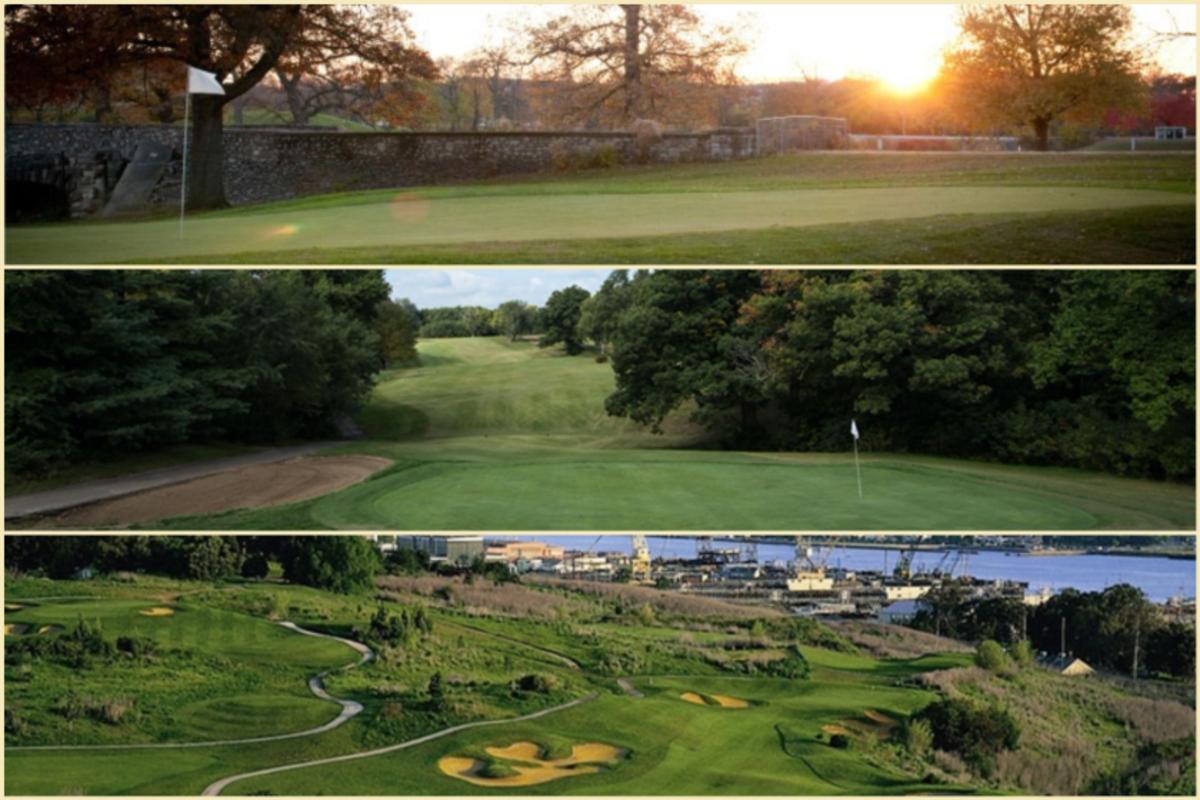Old bones being put to rest

ST. LOUIS — Normandie Golf Club opened 18 holes of golf in 1901. The course was designed by Robert Foulis, who was a protege of Old Tom Morris. The personality is beguiling, with tree-lined fairways, quirky configurations, occasional blind shots and five par-3s.
Located 10 minutes from downtown St. Louis, it pays homage to golf courses gone by, defined by landscape not length, demanding finesse not just force. When the city grew north instead of west, it was a leisure-time landing spot for visitors like Babe Ruth, Bob Hope and W.C. Fields, and locals like Stan Musial and Dizzy Dean.
Normandie is where Willie Anderson won the 1908 Western Open, when the Western Open was big stuff.
In its 119th year, the club bills itself as the “the oldest public golf course still in operation in its original location, west of the Mississippi River.” At least, it used to.

To explain, it’s still that old and it’s still in that original location … it’s just no longer in operation. No longer the oldest, Normandie is now the latest, the latest historic golf club to face the firing squad.
On Jan. 7, Walters Golf Management, announced it was closing the doors for the remainder of the winter. In the same release, the operator, which leases the facility from the University of Missouri-St. Louis Curators, said it has no plans to continue under the present lease agreement.
A management company official commented the “efforts and energies put into maintaining the 118-year-old property and the required capital improvements have just become more significant than the business can sustain.”
Keep in mind that UMSL, which purchased the property for $1.4 million in 2015, has a 10-year agreement that leases the property to the management company for $1 a year. The University recently rejected a $20 million proposal to renovate the club. Whether the broken lease represents a death sentence remains to be seen. But, if you can’t make a go of it at a dollar a year …
Whatever happens, the news concerning Normandie is a sobering reminder of a bigger national picture, a circle-of-life situation, a time-marches-on perspective.
Related:Normandie Golf Club: Go old or go home
According to 2019 National Golf Foundation statistics, the golf industry saw the permanent closure of 198.5 courses (as measured in 18-hole equivalents) in 2018. That’s actually a positive report card. The 2018 number represented seven fewer closings than in 2017. What’s more, there were 12.5 (18-HEQ) new openings, compared to 15.5 the previous two years. The trimming of the herd has slowed.
This is Economics 101, simple supply and demand. In 2005, according to NGF numbers, some 30 million people were playing golf n the U.S., while 29-year-old Tiger Woods was winning his ninth and 10th majors. Demand was high, supply was low, golf courses were humming.
In 2018, 24 million people played golf in this country. The shark has been jumped.
New courses might be exciting and glamorous, but old ones are irreplaceable. To die-hard golfers, they are no different from works of art, architectural wonders or vintage wines. Normandie joins a growing list of inventory, rooted in America’s golf timeline, indelibly connected to surrounding communities, endangered or extinct.
Last June, Mare Island Golf Club in Vallejo, Calif. closed shop, its acreage purchased by a developer. The club's original nine opened in 1892, possibly the oldest nine holes west of the Mississippi. Soon after, Arsenal Island Golf Club in Rock Island, Ill. locked up. And in December, when the U.S Amy couldn’t find a new operator, the club’s assets were auctioned off, even the grand piano. Arsenal Island opened in 1897, the second oldest course in Illinois, four years a junior to historic Chicago Golf Club.
In late December, Indy Parks in Indianapolis made official it would not be re-opening Riverside Golf Course. The city’s annual “Hangover Open,” on Jan. 1, conducted at Riverside for 69 years, moved to nearby South Gove Golf Course. Riverside opened in 1900 and was one of three municipal courses spread over two miles. It will get a makeover in 2020 - but not as a golf course. By the way, those who are hung over would not get too comfortable at South Grove, it too is endangered.
Mississippi’s oldest venue, Great Southern Golf Club, closed its restaurant and filed for Chapter 11 bankruptcy last July. The club was scrambling to restructure some $4 million in debt and keep things afloat. Its initial nine holes, designed by Donald Ross, opened for play in 1908, adjacent to the Great Southern Hotel in downtown Gulfport. According to its website, Great Southern sits on land once owned by Confederate States of America President Jefferson Davis.
There are other examples: Henderson Municipal Golf Course in Henderson, Ky., a 9-hole course established in 1909, bought the curtain down last summer. Joliet (Ill.) Country Club, founded in 1905, folded its “private” tent in 2018 and opened to public play last year. But it appears to be on borrowed time.
Big Run Golf Club in Lockport, Ill. opened in 1930, designed by C.H. Muelenford and Sam Snead. Last summer, the club applied for city water and sewer service and zoning for more than 500 homes.
There are hopeful stories. Metacomet Golf Club, a 119-year old Donald Ross design, was on its last breath in Providence R.I. when FOX golf analyst and former PGA Tourist Brad Faxon put together a group to purchase and revive the club.
“Metacomet is in my soul because I kind of learned to play there,” Faxon said.
This is about soul, and the loss thereof. “Timeless” and “enduring” are qualities on which course design is built. But age has a flip side, one that spars with antiquation, one that requires expensive upkeep. Comedian George Burns once said, “You can’t help getting older, but you don’t have to get old.”
Where golf course maintenance and operation are concerned, it costs a lot of money to cheat Father Time. Neighborhoods change, habits change, economics change and the laws of supply and demand turn upside down.
“Old soldiers never die, they simply fade away," it’s a melancholic notion. But it doesn’t hold up for golf courses. They’re not fading away. They’re being redeveloped, and lost forever.
